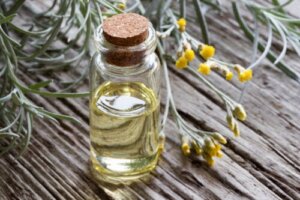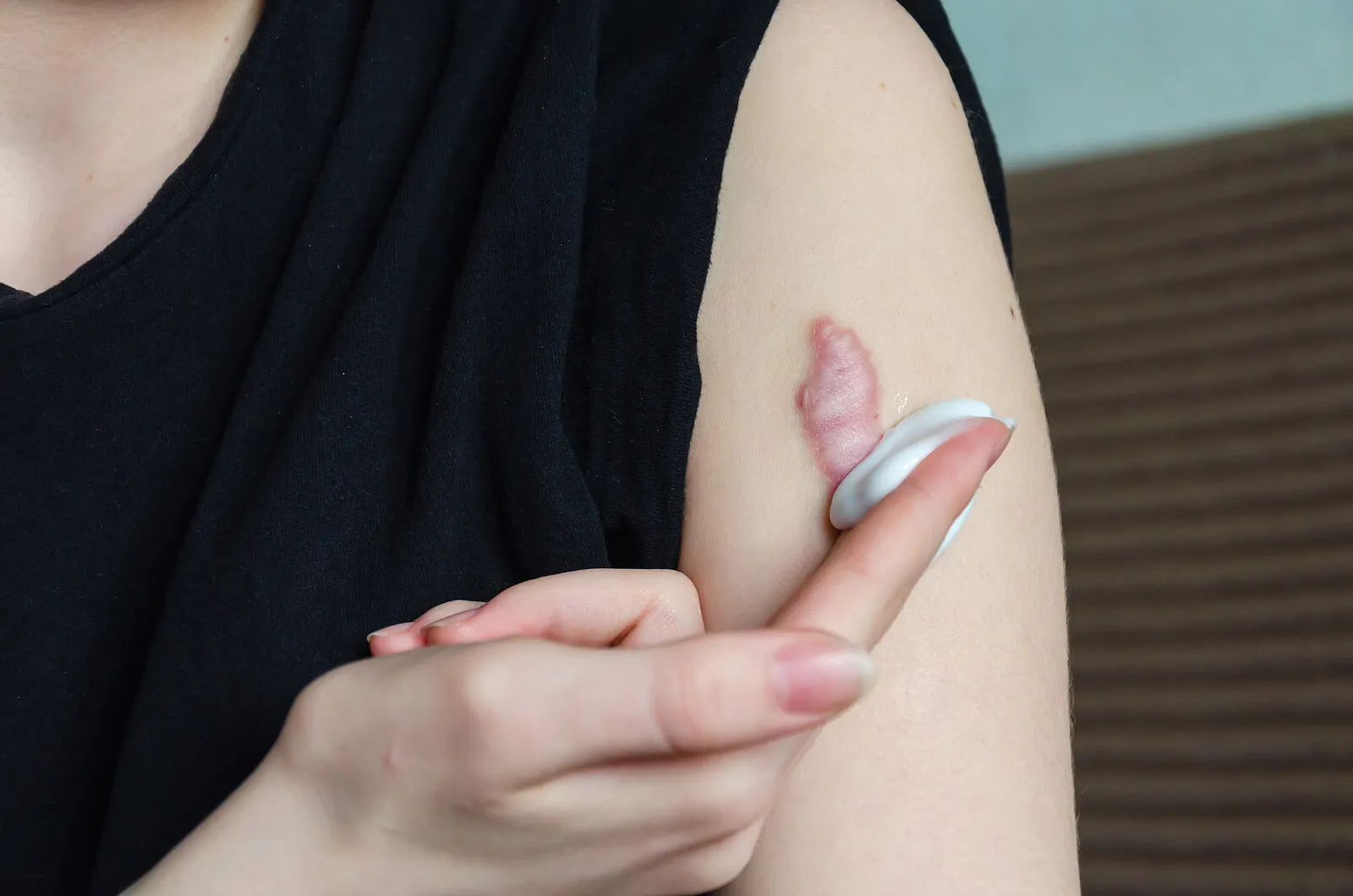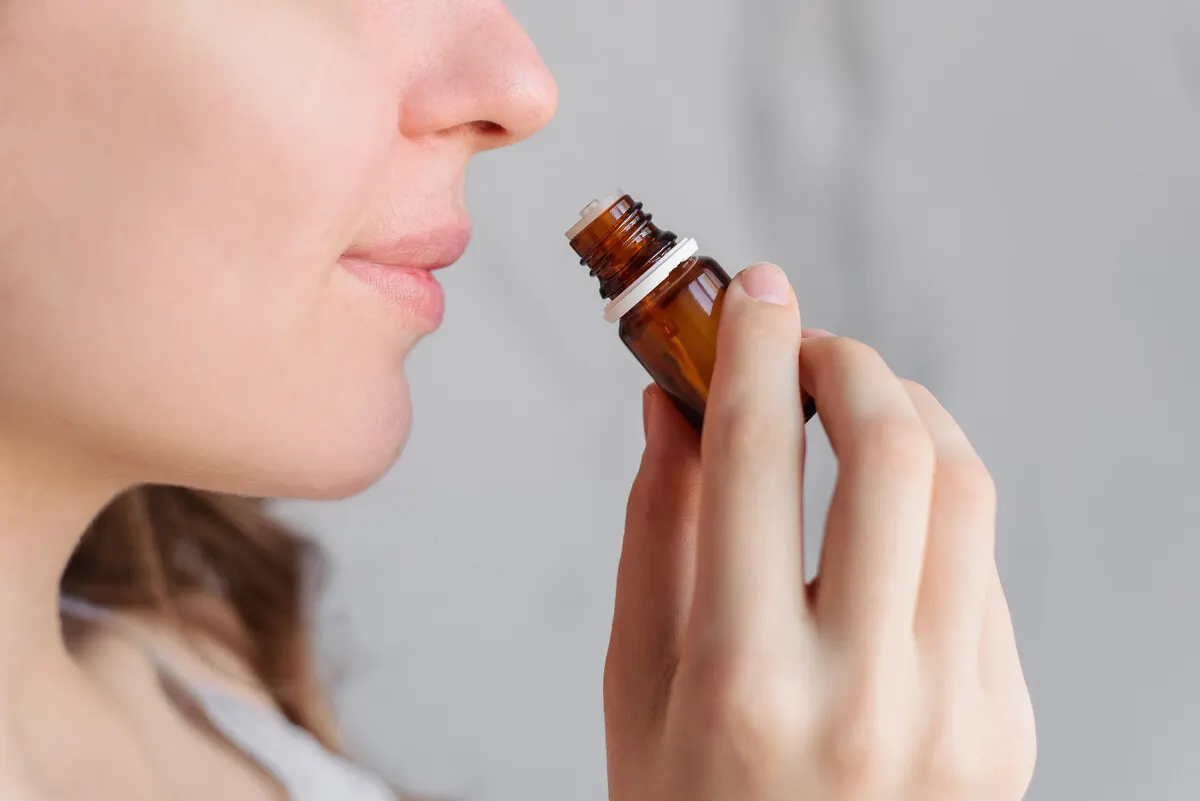Helichrysum Essential Oil: Possible Benefits and Precautions of Use


Reviewed and approved by the pharmacist Franciele Rohor de Souza
Helichrysum essential oil is a product obtained through a distillation process of the plant with the scientific name Helichrysum italicum. This species, native to the Mediterranean and southern Europe, is often used for medicinal purposes, due to its antibacterial, anti-inflammatory, and antifungal properties.
Specifically, and as detailed in a review shared in the Journal of Ethnopharmacology, its flowers and leaves contain pharmacological compounds that can be used as adjuvants in cases of allergies, skin disorders, infections, and inflammations, among others.
Likewise, its essential oil is used to promote wound healing, reduce pain, soothe cold symptoms, and reduce some digestive disorders. Interested in learning more about it? Below, we share in detail its main applications, scientific opinion, and precautions for use.
Possible benefits of helichrysum essential oil
Helichrysum essential oil has a long history as a natural remedy. Given its high concentration of bioactive compounds, it’s often used in traditional medicine as a therapeutic agent in various ailments and diseases. Even so, it should be considered that it isn’t a first-choice treatment.
For now, the evidence on its properties is limited.
Most of the studies supporting its applications are carried out in vitro or in animals, which leads to the need to obtain evidence in humans. Nevertheless, it’s worth mentioning its most outstanding active principles:
- Sesquiterpene lactones
- Phthalates, pyran derivatives and triterpenes
- Caffeic and ursolic acids (in inflorescences)
- Beta-sitosterol (especially in flowers)
- Flavonoids (O,5 %) – especially helicrisina A and B
- Essential oil (0.05-0.15 %) with nerol, alpha, and beta-pyrene, eugenol, linanol, and inositol (inflorescences)
Of course, this wealth of active substances is what explains its therapeutic potential. As compiled by Plants magazine, it’s possible to take advantage of its properties both externally and internally, as its ingestion is usually well tolerated and doesn’t carry risks. Let’s take a look at its uses.
Read more: Benefits and Applications of Rockrose Essential Oil
Skin health
The main uses of helichrysum essential oil have to do with skin health. Firstly, it has been found to combat irritation and help regenerate skin.
Through a study shared in the Journal of Ethnopharmacology, researchers determined that topical use of H. italicum extract protects the dermis against factors such as transepidermal water loss, pH imbalance, and erythema index.
A laboratory study found that this essential oil acts as an anti-inflammatory. This could explain its potential to combat skin inflammation and its associated symptoms, such as irritation and redness. More research is needed to corroborate this.
Wound healing
Traditional medicine has used Helichrysum essential oil as an ally to promote wound healing. Anecdotal evidence suggests that its antioxidants and fats help repair affected tissue. However, there’s no human clinical evidence to prove it.
Still, research in rats reported in Biomedicine & Pharmacotherapy made promising findings. In it, an ointment containing H. italicum essential oil helped increase the density of collagen fibers and thus improved healing.
A previous study also had similar findings. In the article, shared in Pharmaceuticals, topical formulations (gel and ointment) with helichrysum essential oil helped promote healing in diabetic rats. The researchers believe that these effects may also occur in human skin, but specific studies are needed to corroborate this.

Infections
The antimicrobial, antifungal, and antiviral qualities of helichrysum essential oil have been used in the prevention and treatment of various types of infections:
- Research shared through the International Journal of Antimicrobial Agents reported that the extract of this plant helps inhibit the growth of Staphylococcus aureus bacteria, associated with respiratory and skin infections.
- Meanwhile, through Natural Product Research, it was determined that helichrysum essential oil stops or delays the growth of Candida spp. This fungus is linked to the development of canker sores, skin conditions, and other infections.
- The flavonoids anphloroglucinolls contained in this essential oil exhibit antiviral potential. Thus, they favor the relief of flu, colds and herpes.
Digestive discomfort
In folk medicine, helichrysum is used to combat various digestive ailments. Both its tea and its essential oil help to stimulate gastric juices. In fact, its intake is linked to the relief of stomach pain, acidity, indigestion, dyspepsia, and constipation.
In this regard, research reported in the Journal of Ethnopharmacology found that helichrysum oil has antispasmodic potential. Specifically, it helps with intestinal cramps, abdominal pain, and bloating.
Since these findings were made in laboratory and mouse studies, more evidence is needed.
Other applications
Given its interesting properties, helichrysum essential oil is often used for other purposes. As with the benefits mentioned above, more robust and comprehensive studies are needed to evaluate its efficacy.
- Because of its anti-inflammatory potential, this ingredient is common in ointments or natural remedies to soothe muscle and joint pain.
- It can be used as an adjuvant against acne. Its antimicrobial properties are linked to the elimination of the bacteria that cause this condition. In addition, its healing properties favor the recovery of the affected skin. Concrete studies on this benefit are required.
- Although there’s no evidence, helichrysum essential oil is used in aromatherapy and massage to combat insomnia. This benefit is attributed to its relaxing effect.
How is helichrysum essential oil used?
Helichrysum essential oil is often available in ready-to-use formulations for topical use. For example, in ointments, creams, or lotions.
However, it’s possible to use the pure oil in combination with a carrier oil, such as coconut, almond or olive oil. In this case, 3 or 5 drops of the oil are diluted for each ounce of carrier oil.
The product is also consumed as an infusion. Just add 5 drops of the oil to a cup of hot water. Let it steep and drink it.
However, some people use it in aromatherapy sessions using diffusers. If so, it’s important to inhale the vapors to obtain its properties. Pets and children should avoid direct contact with the product because it can be irritating.

Precautions when using helichrysum essential oil
For most healthy adults, the essential oil of helichrysum is safe. However, it’s advisable to do a patch test before applying it as a treatment.
What does this mean? It means applying a small amount to an area of skin. If, after a few hours, there are no unfavorable reactions, it can be used without problem.
In a 2013 study, a woman experienced symptoms of allergic contact dermatitis after using a cream containing extracts of the plant. However, it isn’t known if this was the reason for the reaction, as other study participants had no effects.
However, the oil is contraindicated in the following cases:
- Young children
- Pregnancy and lactation
- Patients with liver disease
- People who are taking medication for the liver
Read more: What Are Essential Oils and How and Why Do They Work?
What to remember about helichrysum essential oil?
In parts of Europe and the Mediterranean, helichrysum essential oil is used as a supplement to improve skin health, fight infections, and promote healing. Some animal and laboratory studies support its effects. However, researchers insist on the need to find solid evidence in humans.
Therefore, it’s an ingredient that should be used sparingly, preferably in formulated products. It shouldn’t be a first-choice approach and topical or external use is especially advised.
All cited sources were thoroughly reviewed by our team to ensure their quality, reliability, currency, and validity. The bibliography of this article was considered reliable and of academic or scientific accuracy.
- Antunes Viegas D, Palmeira-de-Oliveira A, Salgueiro L, Martinez-de-Oliveira J, Palmeira-de-Oliveira R. Helichrysum italicum: from traditional use to scientific data. J Ethnopharmacol. 2014;151(1):54-65. doi: 10.1016/j.jep.2013.11.005. Epub 2013 Nov 14. PMID: 24239849.
- saz peiro, Pablo & Gálvez Galve, Juan & Ortiz Lucas, María. (2009). Monográfico de Helicrhysum italicum y sus variedades. Medicina Naturista. 3. 96-100.
- Kramberger K, Kenig S, Jenko Pražnikar Z, Kočevar Glavač N, Barlič-Maganja D. A Review and Evaluation of the Data Supporting Internal Use of Helichrysum italicum. Plants (Basel). 2021 Aug 23;10(8):1738. doi: 10.3390/plants10081738. PMID: 34451781; PMCID: PMC8399527.
- Maksimovic S, Stankovic M, Roganovic S, Nesic I, Zvezdanovic J, Tadic V, Zizovic I. Towards a modern approach to traditional use of Helichrysum italicum in dermatological conditions: In vivo testing supercritical extract on artificially irritated skin. J Ethnopharmacol. 2022 Oct 3;301:115779. doi: 10.1016/j.jep.2022.115779. Epub ahead of print. PMID: 36202166.
- Djihane, Bouzid & Zerroug, Mohamed. (2016). Evaluation of in vitro anti-inflammatory activity of Helichrysum italicum (Roth) G. Don essential oil. 8. 41-44.
- Andjić M, Draginić N, Kočović A, Jeremić J, Vučićević K, Jeremić N, Krstonošić V, Božin B, Kladar N, Čapo I, Andrijević L, Pecarski D, Bolevich S, Jakovljević V, Bradić J. Immortelle essential oil-based ointment improves wound healing in a diabetic rat model. Biomed Pharmacother. 2022 Jun;150:112941. doi: 10.1016/j.biopha.2022.112941. Epub 2022 Apr 13. PMID: 35429742.
- Nostro A, Bisignano G, Angela Cannatelli M, Crisafi G, Paola Germanò M, Alonzo V. Effects of Helichrysum italicum extract on growth and enzymatic activity of Staphylococcus aureus. Int J Antimicrob Agents. 2001 Jun;17(6):517-20. doi: 10.1016/s0924-8579(01)00336-3. Erratum in: Int J Antimicrob Agents 2001 Sep;18(3):305. PMID: 11397624.
- Oliva, A., Garzoli, S., Sabatino, M., Tadić, V., Costantini, S., Ragno, R., & Božović, M. (2019). Chemical composition and antimicrobial activity of essential oil of Helichrysum italicum (Roth) G. Don fil. (Asteraceae) from Montenegro. In Natural Product Research (Vol. 34, Issue 3, pp. 445–448). Informa UK Limited. https://doi.org/10.1080/14786419.2018.1538218
- Viegas, Daniel & Palmeira-de-Oliveira, Ana & Salgueiro, Ligia & Martinez-de-Oliveira, Jose & Palmeira de Oliveira, Rita. (2013). Helichrysum italicum: From traditional use to scientific data. Journal of ethnopharmacology. 151. 10.1016/j.jep.2013.11.005.
- Rigano, D., Formisano, C., Senatore, F., Piacente, S., Pagano, E., Capasso, R., Borrelli, F., & Izzo, A. A. (2013). Intestinal antispasmodic effects of Helichrysum italicum (Roth) Don ssp. italicum and chemical identification of the active ingredients. In Journal of Ethnopharmacology (Vol. 150, Issue 3, pp. 901–906). Elsevier BV. https://doi.org/10.1016/j.jep.2013.09.034
- Kothavade PS, Nagmoti DM, Bulani VD, Juvekar AR. Arzanol, a potent mPGES-1 inhibitor: novel anti-inflammatory agent. ScientificWorldJournal. 2013 Oct 1;2013:986429. doi: 10.1155/2013/986429. PMID: 24198734; PMCID: PMC3807707.
- Foti, C., Guida, S., Antelmi, A., Romita, P., & Corazza, M. (2013). Allergic contact dermatitis caused by Helichrysum italicum contained in an emollient cream. Contact Dermatitis, 69.
This text is provided for informational purposes only and does not replace consultation with a professional. If in doubt, consult your specialist.








